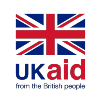For the last two days, I’ve been in Bhutan, attending a regional consultation with children and young people from six South Asian countries. The consultation was organised by an extraordinary initiative that brings governments, UN agencies, INGOs, national NGOs and youth leaders together to combat violence against children – no mean feat, given the political divisions in the region. This regional children’s consultation is where I saw, first hand, CLARISSA’s evidence-based, child-led advocacy at work in an extraordinary way.
The Regional Children’s Consultation, organised by the South Asian Initiative to End Violence Against Children (SAIEVAC), brought 20 children and young people together to finalise a ‘call to action’ on violence against children and child labour in South Asia. Many of these children and young people are ‘youth leaders’, connected to children’s councils or youth networks in their respective countries. On the second day of the consultation, the SAIEVAC youth leaders observed a remarkable event – a direct exchange between working children in Bangladesh and Nepal, and members of the UN Committee on the Rights of the Child (hosted by the Consortium for Street Children and the Chair of the UN Committee, Ann Skelton). In the direct exchange, working children discussed their recommendations for action on child labour with Committee Members in an online dialogue.
This direct exchange is where I saw two worlds meet, and I witnessed the potential of evidence-based, child-led advocacy to bridge these worlds.
Child-led advocacy
The meeting of the three worlds were, firstly, the high profile, political and conceptual world of the UN Committee on the Rights of the Child, and at the other end of the spectrum, the hidden world of children working in the adult entertainment industry and the leather sector in Nepal and Bangladesh. And in the middle, the world of youth leaders who are in a very difficult position having to somehow span the enormous gap between the two other worlds.
But this is where I saw the potential of evidence-based, child-led advocacy – to help close the gap between the high profile and hidden worlds. In the direct exchange, working children presented their recommendations on what aspects of their situation Committee Members should focus on when challenging governments on their implementation of the UN Convention on the Rights of the Child. In this context, children’s recommendations become the ‘bridge’ so it is important to explore how the recommendations were developed.
Firstly, recommendations were based on four years of co-produced action research (adults and children acting as researchers) with over 800 working children – where the same children who undertook research activities developed recommendations. This provided a plethora of evidence (in the form of life stories, case studies, statistics and evaluation data on ‘actions’) from CLARISSA to support the development of recommendations.
Secondly, not only had recommendations been developed by children who had taken part in the research, but these children also had lived experiences of child labour. Consequently, the recommendations represent a mandate from peers to the four children selected to present their recommendations to UN Committee Members.
Mechanisms for child participation
For me, nothing is more powerful than a child with lived experience clearly and confidently articulating a recommendation for change which they know (if it came to pass) would transform their life and the lives of their peers – child-led advocacy.
This is where the SAIEVAC youth leaders come in as ‘brokers’ between the realities of working children’s lives and the infrastructures of power. Youth leaders have opportunities that working children do not, to galvanise the support of other children and young people and to speak directly to decision-makers. But the mechanisms for youth leaders to consult with and be mandated by children and young people with lived experience of different rights violations (child labourers, LGBTQI children, children with disabilities) do not exist in most countries. Supporting these mechanisms for meaningful representation of children is the job of those of us who are committed to children’s advocacy. Creating opportunities for evidence-based, child-led advocacy, now that CLARISSA is coming to a close, is a crucial next step; and we must not disappoint the key inhabitants of the three worlds – working children.
